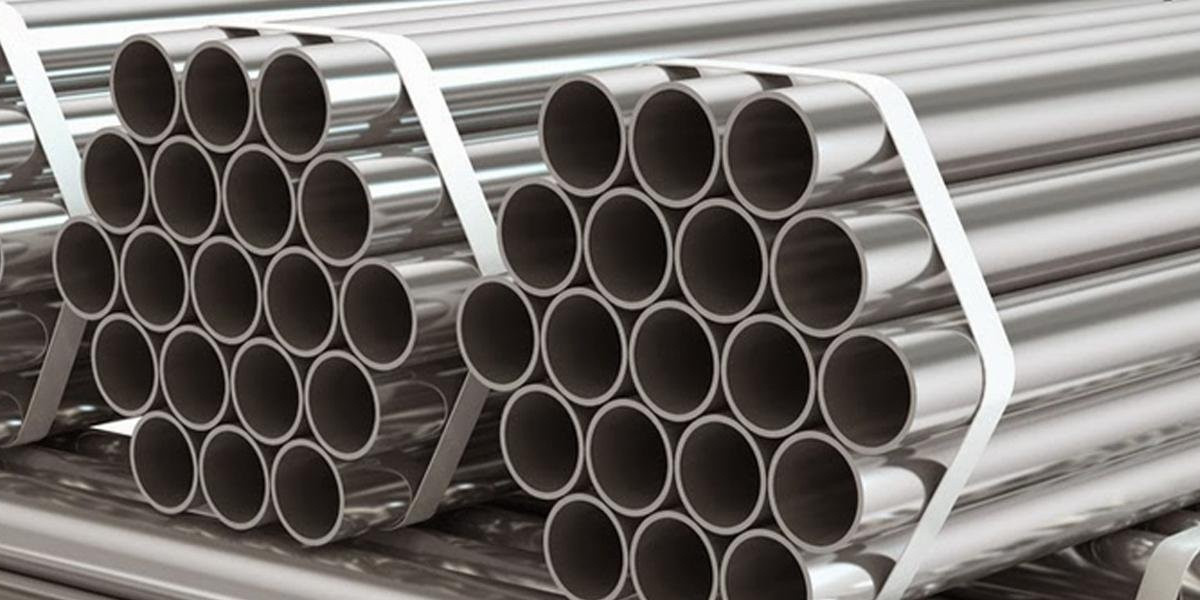Introduction
As the global push toward sustainability intensifies, the steel industry, including the steel pipes and tubes market, is under increasing scrutiny for its environmental impact. Steel production is known to be energy-intensive and a significant contributor to carbon emissions, which has led to a rising demand for greener, more sustainable manufacturing processes. In this context, the future of the steel pipes and tubes market hinges on adopting innovative green technologies and practices that not only reduce environmental harm but also align with global sustainability goals. This article explores the environmental impact of the steel pipes and tubes market and highlights the emerging green technologies that are shaping its future.
Environmental Impact of Steel Pipes and Tubes
The production of steel, including steel pipes and tubes, involves significant energy consumption and the emission of greenhouse gases (GHGs). The main environmental impacts of steel production include:
High Carbon Emissions
Steel manufacturing is one of the largest industrial sources of carbon dioxide (CO2) emissions worldwide. Traditional methods of steel production, particularly the blast furnace method, rely on the use of coal and coke, which are significant sources of CO2 emissions. This method contributes to air pollution and climate change.
Steel Pipes in Infrastructure Projects: The widespread use of steel pipes in infrastructure projects, such as water pipelines, oil and gas transportation, and construction, indirectly increases the carbon footprint associated with these projects, contributing to a more significant environmental burden.
Energy Consumption
Steel manufacturing consumes a large amount of energy, particularly in the form of electricity and thermal energy. The process of converting raw materials like iron ore into steel through processes like smelting requires considerable amounts of energy, which often comes from non-renewable sources, further exacerbating the environmental impact.
Waste Generation
The production of steel pipes and tubes also generates waste in the form of slag, dust, and other by-products. If not managed properly, these by-products can lead to soil and water contamination. Additionally, the extraction of raw materials for steel production, such as mining iron ore, often results in habitat destruction and loss of biodiversity.
Water Usage
Water is a crucial resource in steel production, used in cooling processes and in the creation of certain steel alloys. Steel mills often use significant amounts of water, which can place a strain on local water supplies, particularly in regions facing water scarcity.
The Shift Toward Sustainability in the Steel Pipes and Tubes Market
With increasing pressure from governments, consumers, and environmental groups, the steel industry is undergoing a transformation toward more sustainable practices. The steel pipes and tubes market is embracing green technologies to reduce its environmental footprint, improve energy efficiency, and support global sustainability goals.
1. Green Steel Technologies
One of the most significant shifts in the steel industry is the development and implementation of green steel technologies. These technologies aim to reduce carbon emissions associated with steel production, aligning the industry with global decarbonization efforts.
Hydrogen-Based Steel Production: One of the most promising innovations in green steel is the use of hydrogen instead of coke to reduce iron ore in the production process. The hydrogen-based method, known as Direct Reduced Iron (DRI) using hydrogen, produces water vapor instead of carbon dioxide, making it a more environmentally friendly alternative to traditional methods. Several companies are piloting hydrogen-based steel production projects, and the results so far have been encouraging, demonstrating a significant reduction in emissions.
Electric Arc Furnace (EAF): The electric arc furnace method, which relies on the recycling of scrap steel rather than using virgin materials, is another greener alternative. EAF production has a lower carbon footprint because it uses electricity—often from renewable sources—rather than coal. This method reduces energy consumption and overall emissions.
Carbon Capture and Storage (CCS): Another key green technology in steel production is carbon capture and storage (CCS), which involves capturing CO2 emissions produced during steel manufacturing and storing them underground or using them in other industries. This technology can significantly reduce the overall environmental impact of steel production.
2. Circular Economy and Recycling
The steel industry has long been a leader in recycling, with steel being the most recycled material globally. Steel pipes and tubes are highly recyclable, and many products are produced from recycled scrap steel. This aspect of the steel pipes and tubes market aligns well with the principles of the circular economy, which aims to minimize waste and make the most of existing resources.
Recycling Scrap Steel: Steel pipes and tubes, when no longer in use, can be melted down and repurposed into new products. The recycling process requires significantly less energy than producing steel from raw materials, resulting in lower emissions and resource consumption.
Closed-Loop Recycling: In a closed-loop recycling system, manufacturers can reuse steel materials within the same production process, reducing the need for new raw materials and lowering the overall environmental impact. Steel pipes and tubes made from 100% recycled material contribute to a more sustainable and efficient manufacturing system.
3. Energy Efficiency and Renewable Energy Integration
As energy consumption is a major environmental concern in steel production, the integration of energy-efficient technologies and the use of renewable energy in the production process is becoming more widespread.
Energy-Efficient Technologies: Steel manufacturers are adopting advanced furnace technologies that reduce energy consumption, optimize heat recovery, and improve overall production efficiency. Additionally, automation and digitalization in steel manufacturing are helping companies monitor energy use in real time, enabling them to make adjustments that lead to significant energy savings.
Solar and Wind Power Integration: Some steel plants are integrating solar panels and wind turbines to generate renewable energy on-site, further reducing their reliance on fossil fuels. This transition to renewable energy is an essential step in reducing the carbon footprint of steel production and moving towards net-zero emissions.
4. Eco-Friendly Steel Pipes and Tubes
In response to growing demand for sustainable construction materials, manufacturers are increasingly focusing on producing eco-friendly steel pipes. These pipes are made using sustainable materials, greener production processes, and techniques that minimize environmental harm. They also contribute to energy-efficient infrastructure projects that reduce the carbon footprint of the buildings and systems in which they are used.
Corrosion-Resistant Coatings: Steel pipes and tubes with specialized corrosion-resistant coatings are becoming more popular. These coatings not only extend the lifespan of pipes but also reduce the frequency of replacements, which in turn minimizes the environmental impact of manufacturing new pipes.
Sustainable Sourcing: Many manufacturers are focusing on sourcing raw materials more sustainably, ensuring that the materials used in steel production are ethically and responsibly obtained. This helps reduce the environmental degradation associated with mining and ensures better social and environmental practices within the supply chain.
5. Regulatory and Consumer Pressures
Governments and consumers are increasingly demanding environmentally friendly products. Regulatory frameworks are evolving to require industries to meet stricter environmental standards. In the steel industry, this means compliance with more stringent emissions reduction targets, waste management protocols, and resource conservation goals.
Global Climate Agreements: The Paris Agreement and other global climate initiatives are pressuring industries to cut emissions. As part of these efforts, steel manufacturers are adopting technologies to meet carbon neutrality goals by 2050. This regulatory shift is influencing investment decisions and driving the adoption of green technologies in the steel pipes and tubes market.
Consumer Demand for Sustainable Products: Consumers are becoming more eco-conscious, seeking out sustainable products that align with their environmental values. This trend is encouraging manufacturers to adopt greener practices in steel pipe production to appeal to environmentally aware customers and maintain a competitive edge.
Conclusion
Sustainability is no longer just an option for the steel pipes and tubes market; it is a necessity. The industry's significant environmental footprint is being addressed through the adoption of green technologies, sustainable practices, and a shift toward a circular economy. Innovations in green steel technologies, such as hydrogen-based production, electric arc furnaces, and carbon capture, are paving the way for a greener future. Additionally, the integration of renewable energy, energy efficiency measures, and the increased recycling of steel are contributing to a more sustainable steel industry.
As the global demand for eco-friendly products rises, the steel pipes and tubes market is poised for significant transformation. Manufacturers who embrace sustainability, prioritize environmental impact reduction, and adopt green technologies will not only help reduce the industry's environmental footprint but also position themselves as leaders in a greener future. The next decade holds exciting potential for a more sustainable steel industry, with innovation and responsible practices leading the way toward a cleaner, more efficient future.









